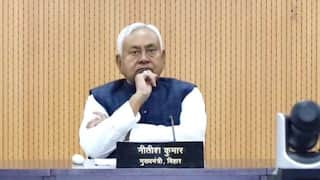Gamification In Education: Enhancing Engagement & Learning Outcomes
Gamification refers to an innovative approach to enhancing students’ engagement in effective learning.

By Tejaswini Gupta
Studying with full concentration can be frustrating, as a lack of focus can be found in a lot of people. Getting an education in the traditional manner, like sitting at your study table and continually staying to study for hours on end, might not be everyone’s cup of coffee.
Lack of concentration is a prevalent issue among students that can hinder their academic performance and overall learning experience. There are several factors contributing to this problem. The digital age has brought with it numerous distractions, such as social media, smartphones, and constant connectivity, which can divert students' attention away from their studies. Additionally, the fast-paced and multitasking nature of modern life can make it challenging for students to focus on a single task for an extended period of time. Lack of interest or relevance in the subject matter, fatigue, stress, and insufficient sleep can also contribute to reduced concentration.
Moreover, traditional teaching methods that rely heavily on passive learning and rote memorisation may fail to engage students actively, resulting in waning attention. Addressing this issue requires a holistic approach that includes creating an engaging and interactive learning environment, and to counter that, Gamification in Education has been a successful method to make things interesting for students.
What Is Gamification?
Gamification refers to an innovative approach to enhancing students’ engagement in effective learning. The environment in which a student studies and learns is crucial, as theoretical knowledge without practical experience will not be the right solution for each student.
By integrating game elements into educational experiences, gamification has the ability to transform traditional classrooms into a more interactive and personalised learning environment. The use of game mechanics, such as points, levels, badges, and leaderboards, motivates students and encourages their active participation. Gamification fosters a sense of enjoyment and excitement, making learning fun and captivating. It also provides immediate feedback, allowing students to assess their progress and make improvements.
Over the years, many researchers have contributed their knowledge to the concept of gamification in education, and according to them, it has proven beneficial to combine the aspects of education and games together, like:
James Paul Gee, a linguist and education scholar, published the book "What Video Games Have to Teach Us About Learning and Literacy" in 2003. In his book, Gee explored video games' cognitive and social benefits and how they can be applied to educational settings. He emphasised the importance of game-based learning principles in promoting deep learning and problem-solving skills.
Numerous organisations and institutions, including educational technology companies, universities, and research institutes, have played a role in promoting gamification in education. They have conducted research, developed educational games and platforms, and implemented gamified approaches in classrooms to explore their impact on learning outcomes.
Here are some ways in which Gamification can be implemented in the educational system, depending on the learning objectives and age of the students:
Points & Badge System
To make things interesting, teachers can introduce a point system where students earn points for competing tasks, achieving certain goals, or demonstrating some skills. Students can accumulate points to reach a certain level or earn badges for recognition. Well, to think of this, it is also present in our traditional education as first, second, and third positions, but rather than having it annually, it should be necessary to be present in each subject weekly as it will encourage the students to give their best every time. It will also motivate those who may not be good at every subject but in some subjects, they can shine.
Quests & Missions
Quests and missions in gamification have become popular strategies in education to engage students and enhance their learning experience. By incorporating a narrative structure into the curriculum, quests and missions provide students with a sense of purpose and adventure. Students embark on a learning journey where they complete various tasks, solve challenges, and progress through levels of increasing difficulty.
Each lesson or challenge represents a learning objective or concept that needs to be mastered. As students accomplish these objectives, they earn rewards, unlock new content, or advance in the narrative. Quests and missions add an element of excitement and motivation to the learning process, as students feel a sense of achievement and progress. They encourage active learning, problem-solving, critical thinking, and collaboration among students. By infusing education with a game-like storyline, quests and missions foster a deeper engagement with the subject matter and create a dynamic and immersive learning environment.
Virtual Environment
Innovative technologies provide immersive and interactive experiences that enhance the educational process and foster more profound understanding. Simulations allow students to step into virtual worlds where they can explore complex concepts, practise real-world scenarios, and experiment in a safe and controlled environment.
Virtual environments, on the other hand, offer a platform for collaborative learning, transcending physical boundaries and allowing students from different parts of the world to interact and learn together. Students can engage in virtual classrooms, attend lectures by renowned experts, and participate in interactive discussions, all from the comfort of their own homes. Additionally, simulations and virtual environments provide educators with valuable tools for assessment, enabling them to track student progress, identify areas for improvement, and provide personalised feedback.
Overall, simulations and virtual environments have immense potential to revolutionise education by fostering experiential learning, promoting collaboration, and empowering students to become active participants in their educational journey.
Gamified Assessments
Traditional assessments can be transformed into gamified formats. For example, quizzes or tests can include timers, progress bars, or rewards to create a sense of urgency and motivation.
Real-World Rewards
Teachers can introduce tangible rewards, such as certificates, small prizes, or special privileges, to incentivise students' engagement and achievements within the gamified learning environment.
In conclusion, gamification in education has emerged as a powerful tool for enhancing student engagement and improving learning outcomes. By incorporating game elements and principles into educational settings, educators can transform traditional classrooms into interactive and dynamic learning environments.
The use of game mechanics, such as points, levels, badges, and leaderboards, taps into students' intrinsic motivation and encourages active participation. Gamification promotes a sense of enjoyment and excitement, making learning fun and captivating. It provides immediate feedback, allowing students to assess their progress and make improvements, reinforcing the learning process.
Gamification also enables personalised learning by adapting the material and difficulty levels to the needs of particular students. Games that encourage collaboration and social contact improve communication and problem-solving abilities. Gamification equips students for real-world challenges by bridging the gap between theoretical understanding and actual application.
The gamification strategy fosters critical thinking, decision-making, and creative thinking. All things considered, gamification in education has the ability to transform conventional teaching strategies and produce a dynamic, effective learning environment. By utilising the power of games, educators can help kids realise their full potential and cultivate a lifetime love of learning.
Education Loan Information:
Calculate Education Loan EMI






































